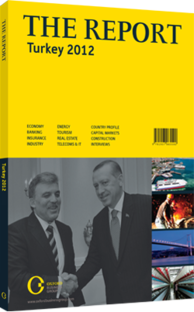Alternatively growing: Online and mobile banking cast a wide net for new customers
In the last decade, Turkey’s lenders invested heavily in developing alternative banking practices, starting with ATMs and recently expanding to internet and mobile platforms. Moving transactions out of the branches actually increased contact between banks and their customers, who now have nearly constant access to their accounts. This has helped banks reduce costs, attract new customers and tap into alternative revenue sources.
PRODUCT DIFFERENTIATION: The availability of robust internet and mobile platforms could be an increasingly important factor in a customer’s decision of where to bank. Multiple channels raises customer satisfaction by providing flexibility and continuous access to services, Sedat Tosyalı, the division head for İş Bankası’s alternative distribution channels strategy division, told OBG. Moreover, as more people begin performing their transactions online, waiting times at branches are reduced, further boosting overall customer satisfaction, he added.
While mobile and internet banking may help lenders increase customer bases, they can also generate revenues from transaction fees and commission – particularly important as banks’ interest margins are now at historical lows. As Tolga Tavlaş, vice-president of internet and mobile banking at Yapı Kredi, told OBG, lenders want customers to conduct as many transactions as possible, and having continuous access to accounts via the internet or mobiles is helpful in this sense.
The variety of transactions available to Turkish customers on alternative platforms is impressive. Money transfers, foreign currency exchanges, bill payments, stock and bond trades, and access to investment funds are just a few of the options available via the internet or mobile channels, and usage levels are high. According to data from the Turkish Banking Association (TBB), about 11.4m investment transactions, including options like stock purchases, were carried out on internet platforms for the three-month period ending December 2011. This represents substantial growth in the last years, as this figure stood at 9.2m in the final quarter of 2008. The internet is even more popular for basic financial transactions, like cash transfers and bill pay, with 90.4m of these transactions occurring between October and December 2011.
These data underscore the major difference between internet and mobile banking in Turkey and more developed markets like Europe and the US. While the latter may have higher penetration rates – there were about 8m active users of internet bank accounts in Turkey as of the end of 2011 according to TBB, or slightly less than 10% of the population – Turkish banks offer far more services via alternative channels and are better positioned to use technology to boost their bottom line.
As Tavlas told OBG, “Europe may have more internet users, but its banks could use more advanced data mining and web-optimised sales techniques to offer products tailored to individuals to sell more.” Turkish lenders employ sophisticated methods to offer loans, and the number of these requests processed via the internet and mobile channels is impressive. Each year İş receives about 3m loan and credit card applications from its internet-mobile-ATM channel. Applicants with a good credit history can receive a loan immediately.
COST SAVINGS: While generating extra revenue and selling more loans are important benefits, a more fundamental and important effect is cost reduction. Branches are expensive to maintain, and costs can be reduced to the extent that transactions can be moved to alternative channels. Even the introduction of ATMs, which in Turkey offer services beyond cash withdrawal, helped in this sense, reducing the burden on branches.
Although there will likely always be a need for physical outlets, banks could be staffed by fewer people and offer fewer transactions requiring structural presence.
In fact, the number of branches in Turkey is growing, reaching nearly 11,000 in 2011, according to the TBB.
On the other hand, as lending has expanded rapidly in the last two years, this figure may be lower than it would have been had banks not so successfully persuaded customers to bank via alternative channels, which has increased demand in the sector as a whole.
You have reached the limit of premium articles you can view for free.
Choose from the options below to purchase print or digital editions of our Reports. You can also purchase a website subscription giving you unlimited access to all of our Reports online for 12 months.
If you have already purchased this Report or have a website subscription, please login to continue.

